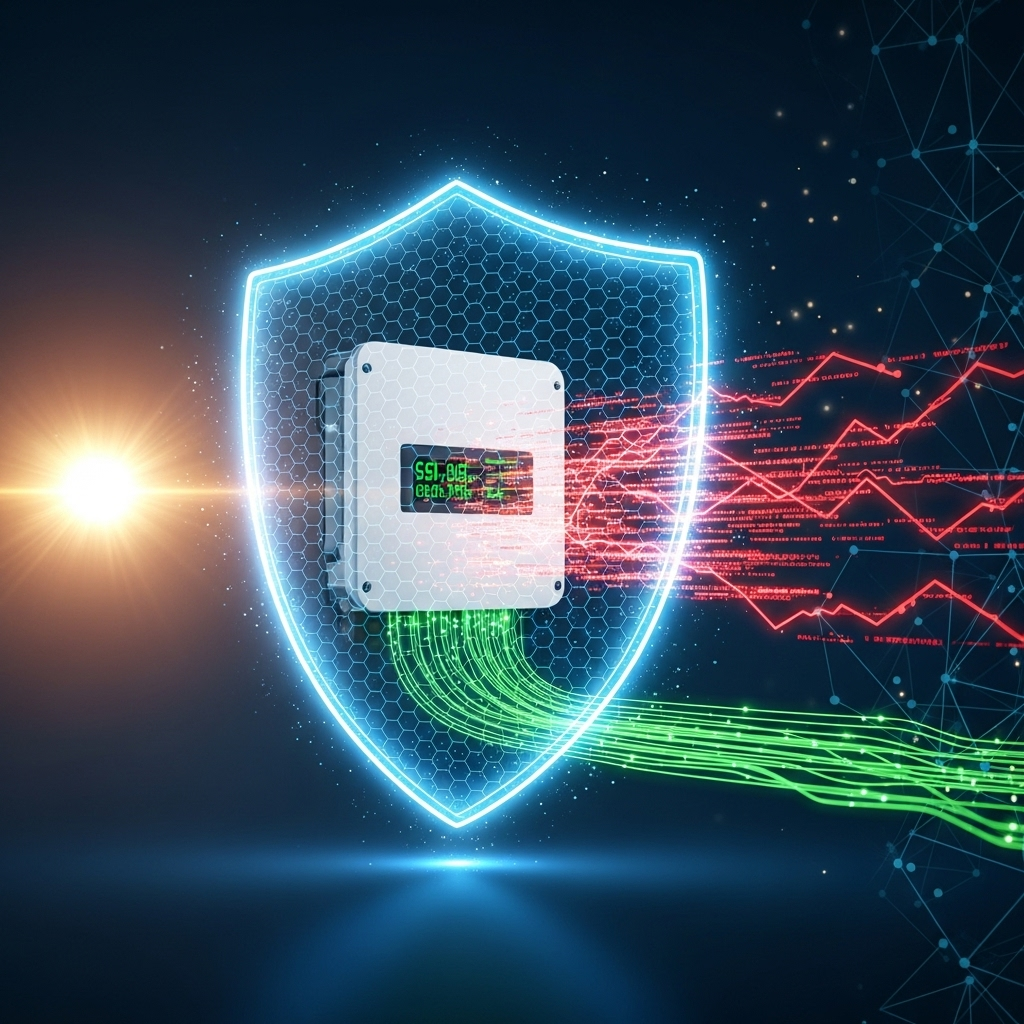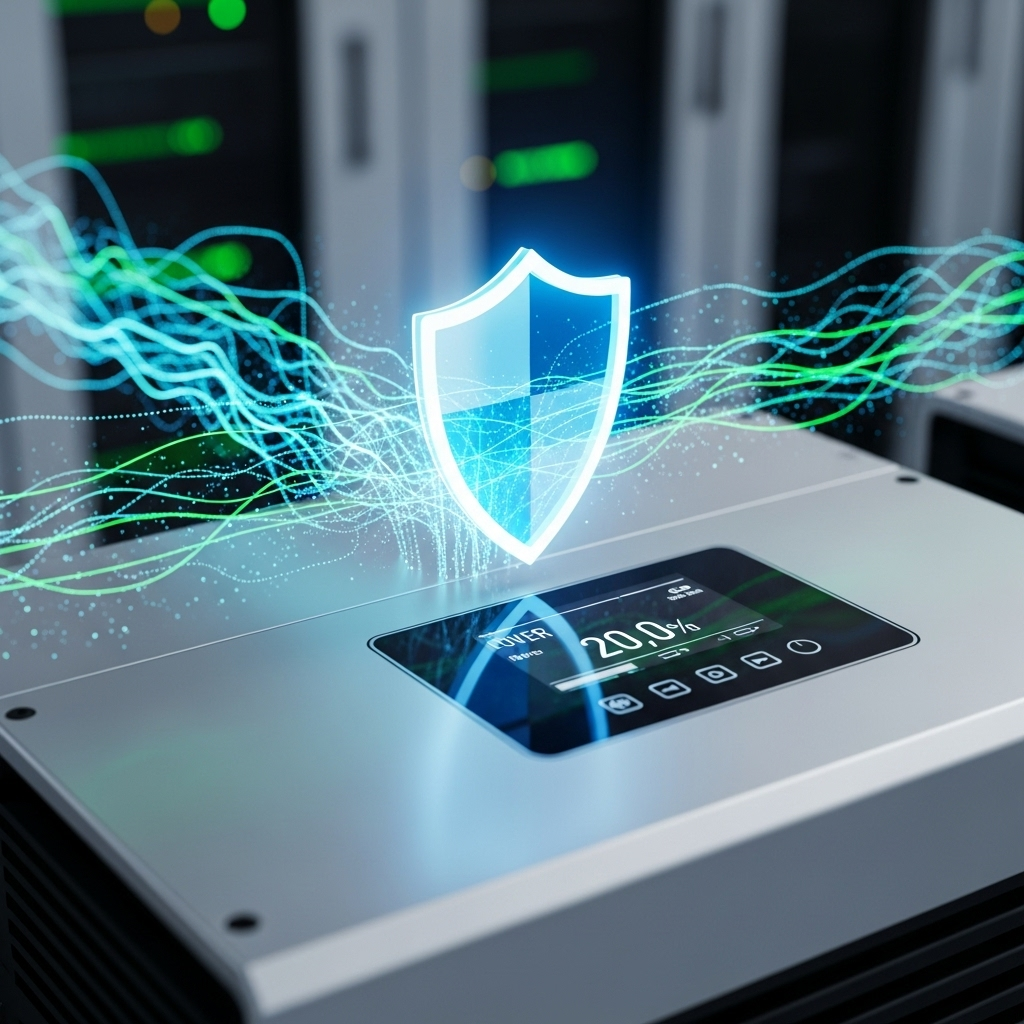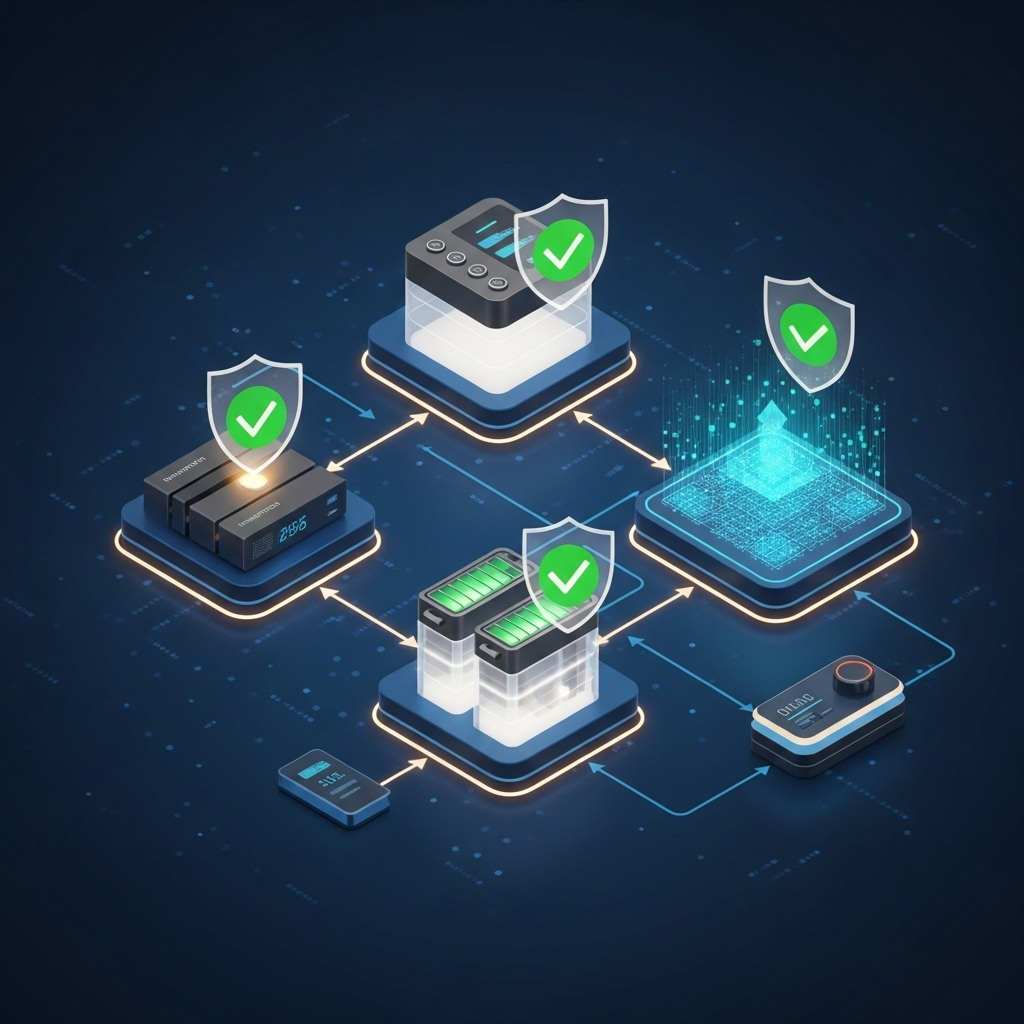A solar inverter is the operational core of your energy system, diligently converting DC power from your panels into AC power for your home. But as these devices become smarter and more connected, they also represent a potential security vulnerability. Firmware updates are necessary to enhance performance and add new features, but if not handled securely, they can open the door to significant risks. Unsecured updates could lead to system hijacking, grid instability, or complete failure. Two critical pillars of modern inverter firmware security are signed updates and rollback-safe updates.

What Are Signed Firmware Updates and Why Do They Matter?
Think of a signed firmware update as a package with a tamper-proof seal from the manufacturer. It provides a cryptographic guarantee that the software you are installing is authentic and has not been altered. This process is fundamental to maintaining the integrity of your solar inverter.
The Anatomy of a Signed Update
The process relies on public-key cryptography. The manufacturer uses a secret 'private key' to create a unique digital signature for the firmware file. Your inverter has a corresponding 'public key' and uses it to verify this signature. If the signature is valid, the inverter proceeds with the installation. If it has been tamed with in any way—or if it's from an unauthorized source—the signature check will fail, and the update will be rejected. This verification ensures that only legitimate software from the manufacturer can run on your device.
The Risks of Unsigned Updates
Without digital signatures, there is no way to verify the authenticity of an update. This exposes the system to severe risks. Attackers could inject malicious code into an unsigned update file, potentially taking complete control of the inverter. A corrupted or poorly crafted update could also 'brick' the device, rendering it permanently inoperable. As inverters become more programmable, a coordinated attack on multiple unsecured devices could even be used to destabilize the local power grid. According to a report from the International Energy Agency, cybersecurity is one of the major challenges of digitalization in the energy sector.
Understanding Rollback-Safe Updates: Your System's Safety Net
While signed updates protect against malicious attacks, rollback protection acts as a safety net against update failures. It ensures your system can recover gracefully if something goes wrong during the update process, preserving your access to solar power.
What Happens When an Update Fails?
A firmware update can fail for several reasons: a sudden power outage during installation, a corrupted download file, or an unforeseen hardware incompatibility. In a system without rollback protection, a failed update can leave the inverter in a non-functional state. The device might fail to boot, leaving you without power until a technician can physically intervene—a costly and time-consuming process.
How Rollback Protection Works
A rollback-safe system maintains a copy of the last known stable firmware version in a protected area of its memory. When a new update is installed, the inverter boots the new version. If it detects a critical error or fails to start correctly, it automatically discards the faulty update and reboots using the previous stable version. This self-healing mechanism ensures your system remains operational, maximizing uptime and providing peace of mind.
| Feature | Secure Inverter (Signed & Rollback-Safe) | Insecure Inverter |
|---|---|---|
| Update Authenticity | Guaranteed via digital signature verification. | No verification; accepts any firmware file. |
| Risk of Tampering | Extremely low. Malicious code is rejected. | High. Vulnerable to malware and hijacking. |
| Failed Update Outcome | Automatically reverts to the last stable version. | Device may become 'bricked' and require service. |
| System Uptime | High. Self-recovering from update failures. | Low. Vulnerable to extended downtime. |
The Broader Context: Firmware Security in a Connected World
The need for secure updates extends beyond the individual device. As solar systems become integral parts of a larger energy ecosystem, their security has wider implications for grid stability and the effective management of distributed energy resources (DERs).
Evolving Standards and Grid Requirements
Standards like IEEE 1547 are continuously updated to define how DERs interact with the grid. The 2018 revision of IEEE 1547 introduced advanced 'smart inverter' functionalities, such as voltage and frequency support, to help stabilize the grid. These advanced capabilities are managed by the inverter’s software. Secure firmware updates are essential to deploy these features reliably and ensure they cannot be maliciously manipulated.
Remote Monitoring and Control
Remote access is a powerful tool for monitoring system performance and diagnosing issues without a site visit. However, every connection point is also a potential entry point for attackers. As the IEA's Technology Roadmap - Solar Photovoltaic Energy 2010 notes, any hardware accessible through remote interfaces must have secure communication software. This makes robust update mechanisms like signed firmware a non-negotiable requirement for any remotely managed solar inverter.
Integrating Storage and Performance Metrics
Modern energy solutions increasingly pair solar panels with battery storage systems. This integration makes the inverter's software even more critical, as it must intelligently manage the flow of energy between the panels, battery, grid, and home. The firmware dictates how efficiently your battery charges and discharges. For a deeper look into the key metrics that define a high-performing solar and storage system, understanding the ultimate reference for solar storage performance is crucial, as these metrics are directly influenced by the inverter's firmware.
How to Verify Your Inverter's Update Security
Protecting your investment starts with making informed choices. When selecting a solar inverter, it is important to scrutinize its security features. A manufacturer committed to security will be transparent about its practices.
Checking the Manufacturer's Documentation
Review the technical specification sheets, user manuals, and any available security whitepapers from the manufacturer. Look for specific terms like 'digitally signed firmware', 'secure boot', 'update authentication', and 'rollback protection'. The presence of these terms indicates a focus on robust security design.
Asking the Right Questions
When speaking with an installer or manufacturer, be prepared to ask direct questions about their security protocols:
- How do you ensure the authenticity and integrity of firmware updates?
- What is the process if a firmware update is interrupted or fails?
- Does the system have protection against downgrading to an older, potentially vulnerable firmware version?
A lack of clear answers to these questions should be considered a significant red flag.
Securing Your Energy Independence
Your solar inverter is more than just a piece of hardware; it is the control center of your personal power plant. In our connected world, its digital security is just as important as its physical durability. Signed firmware updates and rollback protection are not luxury features—they are fundamental requirements for a secure, reliable, and resilient energy system. By choosing equipment with these protections, you are not just buying an inverter; you are investing in true energy independence, confident that your system is built to perform safely and securely for years to come.
Frequently Asked Questions
What is a signed firmware update?
A signed firmware update is a software update that has been digitally 'signed' by the manufacturer using a cryptographic key. This process verifies that the update is authentic and has not been tampered with, preventing the installation of malicious or corrupted code.
Why is rollback safety important for a solar inverter?
Rollback safety is a feature that allows the inverter to automatically revert to its previous stable firmware version if a new update fails. This prevents the device from becoming non-functional ('bricked') and ensures continuous operation, which is especially critical for off-grid systems.
Can a hacker take control of my solar system through a firmware update?
If an inverter does not use signed firmware updates, it is vulnerable to such attacks. An attacker could potentially install malicious firmware to control the inverter, steal data, or even affect the local power grid. This is why choosing inverters with strong security protocols is essential.





Leave a comment
All comments are moderated before being published.
This site is protected by hCaptcha and the hCaptcha Privacy Policy and Terms of Service apply.